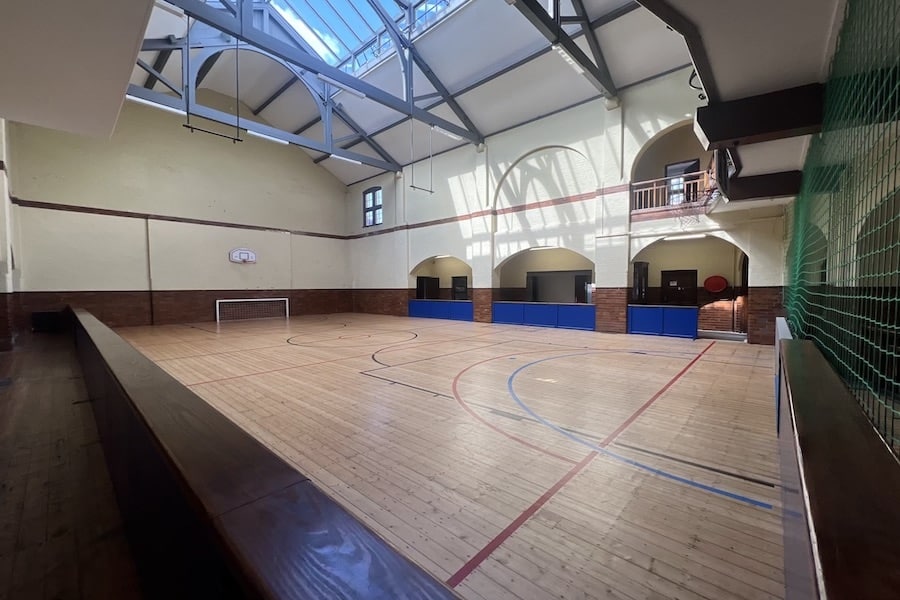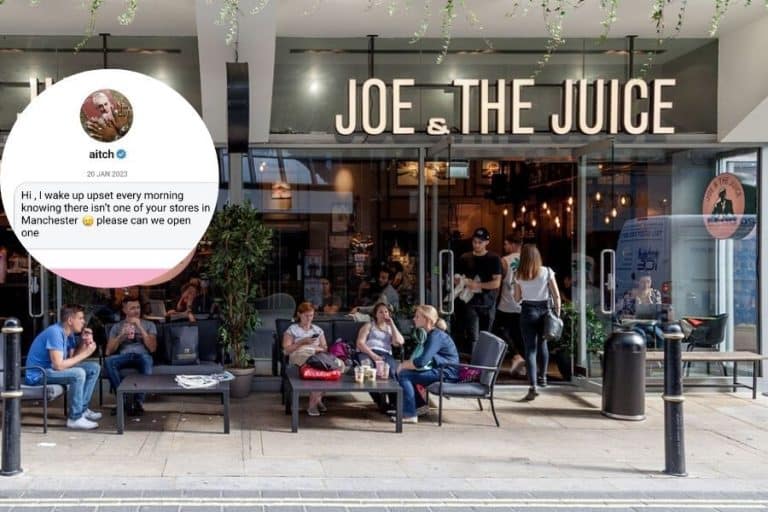Salford Lads Club is saved after after an overwhelming community response
- Written by Thom Bamford
- Last updated 3 months ago
- City of Salford, Community, Culture, Featured

Salford Lads Club, the beloved Greater Manchester institution with over 120 years of history, has been saved from closure after a phenomenal community effort raised £273,000 in just six weeks.
Announced in October, the club had been facing an existential crisis, requiring £250,000 by the end of November to keep its doors open.
The overwhelming response included contributions from global superstars, local businesses, and over 1,400 community members, highlighting the club’s importance as both a cultural landmark and a lifeline for young people in one of the country’s most deprived areas.
Salford Lads Club is saved

The campaign drew significant support from high-profile figures.
Salford Council pledged £100,000, while Graham Nash of The Hollies and Crosby, Stills, Nash & Young contributed £10,000, calling the club his “second home.”
Morrissey, the iconic former frontman of The Smiths, donated £50,000.
These contributions were bolstered by the auction of a Noel Gallagher guitar and a final £30,000 donation from gas company Cadent, which helped surpass the target on November 28, 2024.
This effort underscores the club’s cultural resonance, immortalised in 1985 when The Smiths used it as the backdrop for their The Queen Is Dead album cover. The building has since become a pilgrimage site for fans from around the world.
A lifeline for Salford’s youth

Founded in 1903 with the mission to “Brighten Young Lives and Make Good Citizens,” Salford Lads Club has provided generations of young people with opportunities in sports, music, and the arts. From footballers who went on to play for Manchester’s premier clubs to the emergence of cultural icons like artist Harold Riley, the club’s walls echo with achievement and inspiration.
Today, the club offers vital youth services in an area where 46% of children live in low-income families. Activities include boxing, football, arts and crafts, and annual adventure camps. For many, the club is a safe haven from the pressures of poverty and gang culture.
The club’s football program has flourished, growing from zero to seven teams in just seven years, including its first-ever girls’ team. Matches are held at local venues, with the club covering all costs to ensure accessibility for families.
Facing financial challenges

Despite its legacy, the club has struggled to maintain its Edwardian Grade II-listed building amid rising costs. Annual expenses such as utilities (£15,000), building maintenance (£15,000), and insurance (£13,000) have strained its resources. Grants, once a lifeline, have become increasingly difficult to secure due to heightened competition.
In the last fiscal year, the club’s income of £160,000 fell far short of its £394,700 expenditure. Staff shortages further hampered operations and grant applications, intensifying financial challenges.
Breathing Space and Ambitious Plans
With its immediate future secure, Salford Lads Club is now setting its sights on long-term stability. Plans are underway to establish a £1 million Legacy Fund, which would generate an estimated £40,000 to £50,000 annually. This endowment, combined with the club’s transition to Charitable Incorporated Organisation (CIO) status, aims to ensure sustainable operations and a legacy of service for future generations.
Club leaders are also exploring new initiatives, including corporate sponsorships and innovative fundraising events, to build resilience and expand programs for the community.
Why it matters
Salford Lads Club is s a cornerstone of hope and opportunity for young people and a cultural touchstone for Greater Manchester.
Its recent fundraising success just goes to show the community’s dedication to preserving this historic institution.
As Laura Sipsmith, head of youth, expressed: “Salford Lads Club is a monument not just to the past, but to a future where young people can come here, find themselves, and thrive.”
Long may that continue!
- This article was last updated 3 months ago.
- It was first published on 14 October 2024 and is subject to be updated from time to time. Please refresh or return to see the latest version.
Did we miss something? Let us know: [email protected]
Want to be the first to receive all the latest news stories, what’s on and events from the heart of Manchester? Sign up here.
Manchester is a successful city, but many people suffer. I Love Manchester helps raise awareness and funds to help improve the lives and prospects of people across Greater Manchester – and we can’t do it without your help. So please support us with what you can so we can continue to spread the love. Thank you in advance!
An email you’ll love. Subscribe to our newsletter to get the latest news stories delivered direct to your inbox.
Got a story worth sharing?
What’s the story? We are all ears when it comes to positive news and inspiring stories. You can send story ideas to [email protected]
While we can’t guarantee to publish everything, we will always consider any enquiry or idea that promotes:
- Independent new openings
- Human interest
- Not-for-profit organisations
- Community Interest Companies (CiCs) and projects
- Charities and charitable initiatives
- Affordability and offers saving people over 20%
For anything else, don’t hesitate to get in touch with us about advertorials (from £350+VAT) and advertising opportunities: [email protected]

Joe & The Juice is launching a massive Manchester store – thanks to local rapper Aitch

Strangeways could be home to thousands – but there’s one big problem in the way


















